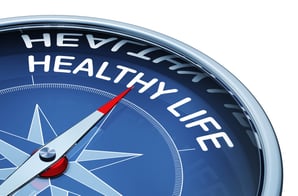The number of Americans ages 65 and older is projected to double from 53 million in 2019 to nearly 100 million by 2060.
Taking steps to lower risk for vascular disease is crucial for individuals of all ages especially for the aging population. The vascular system is made up of arteries and veins that carry oxygen-rich blood throughout the body to the vital organs, the brain, and the legs. As we age, and as we are exposed to risk factors such as smoking, hypertension, diabetes, high cholesterol, our arteries tend to thicken with a buildup of plaque and cholesterol, and form aneurysms. Let's take these head on and discuss our vascular health.
SMOKING CESSATION
Smoking cessation is perhaps the most powerful of healthy lifestyle changes. Tobacco use ranks highest on the list of preventable causes of death worldwide. For example, people who smoke 20 cigarettes per day have a risk of heart attack that is six times that of a nonsmoker. Smoking cessation begins to lower CVD risk within a matter of months of quitting. In just 3 to 5 years, the CVD risk in a former smoker decreases to that of a nonsmoker.
Stopping tobacco use is difficult and can often take multiple attempts. Don’t be discouraged. There are drugs that can help such as Chantix (varenicline, Pfizer, Mission, KS) and weaning tools such as NicoDerm patches and Nicorette gum (GlaxoSmithKline, London, UK). There are also many sources of counseling and support through the American Heart Association, church groups, hospitals, and other organizations. Remember that weaning tools still have the negative effects of nicotine on blood vessels and are not totally free of cardiovascular disease risk.
 BLOOD PRESSURE CONTROL
BLOOD PRESSURE CONTROL
Exercise and weight control are important components of any program for blood pressure control. First, high blood pressure has to be recognized through blood pressure measurement at screening fairs, drugstores, at home, or as part of a routine physical exam. Thirty minutes of exercise a day, five times a week at least can help control blood pressure as well as weight—start slowly and work your way up. Diet is also a mainstay of blood pressure control with special emphasis on sodium intake. Nutrition awareness is a big help here. Processed foods, soups, snack foods, and diet salad dressings are all very high in sodium and need to be avoided or used in limited amounts. Salt is one of man’s earliest preservatives and is an acquired taste, but other spices can substitute.
EAT HEALTHILY
Major risk factors leading to atherosclerosis are hypertension, diabetes, obesity, and high cholesterol, all of which are profoundly affected by our diet. It has been traditional knowledge for generations that a healthy diet is associated with better health.
Protect with produce
The more fruits and vegetables you eat, the less your likelihood of developing vascular problems. Fruits and vegetables are rich sources of vitamin C and potassium, two nutrients that are especially associated with improved function of the endothelial cells that makeup the inner lining of all blood vessels. Furthermore, a diet rich in produce leaves less room for unhealthy substances. Don’t rely on individual supplements of these nutrients, however, as that has been shown to be ineffective or even harmful. Instead, when choosing or planning meals, aim to load half your plate with fruits and vegetables.
Slash sodium
Limiting excess sodium seems to keep blood vessels healthier. All people over the age of 50, and anyone who already has high blood pressure, diabetes, or kidney disease are urged to keep daily sodium intake to no more than 1,500 milligrams. Everyone else should strive for no more than 2,300 milligrams a day. The best ways to achieve these targets is to eat fewer processed foods such as canned, frozen, or ready-to-eat convenience or fast foods, and to fill your salt shaker with herbs and spices rather than salt of any type. Plus, read the Nutrition Facts labels on food packaging for sodium content and choose items with lower numbers.
Reduce sugar intake
A diet high in sugar and refined carbohydrates (breads, pasta, etc) has in recent studies shown to negatively affect lipid profiles—it lowers good cholesterol, increases bad cholesterol, and elevates triglyceride levels. The popularity of sugar and refined carbohydrates has contributed to the obesity epidemic in the United States and the rise of the metabolic syndrome, both of which are major risk factors for atherosclerosis and vascular disease. Carbohydrates raise blood sugar levels and trigger the release of insulin. A diet high in refined carbohydrates has the effect of causing an exaggerated insulin release, which is associated with insulin resistance and the development of type II diabetes. A low-glycemic diet consisting of whole grains (complex carbohydrates), fruits and vegetables, and legumes (beans, peas, and lentils) can counteract the development of insulin resistance. Excellent sources of complex carbohydrates are whole-grain breads, oatmeal, and brown rice. The American Heart Association recommends that people consume only 5% of their daily calories as added sugar.
Antioxidants
Antioxidants are natural substances that exist as vitamins, minerals, and polyphenols, among others. Many antioxidants are identified in foods by their distinctive colors: the deep red of cherries and tomatoes; the orange of carrots; the yellow of corn and saffron; and the blue-purple of blueberries, blackberries, and grapes. The most well-known compounds with antioxidant activities are vitamins A, C, and E; beta-carotene; the mineral selenium; and the compound lycopene. Antioxidants help prevent disease by blocking free radicals, a byproduct of oxygenation that causes cellular damage that leads to the development of atherosclerosis. An increasing body of evidence points to beneficial effects from the antioxidants present in grapes, dark chocolate, blueberries, and tea on cardiovascular health.
Watch your waistline
Undesirable weight gain has been linked to increases in arterial stiffness. Less supple arteries lose their ability to function as needed. Data show that as visceral fat (popularly known as belly fat) increases, so does stiffening of the arteries. It is thought that excess body fat creates a series of processes in the body that disrupt vascular structure and function. Knowing your waist measurement (via the aid of a tape measure) is a better harbinger of risk than paying attention to your body mass index alone. Cutoff points for waist size include keeping to 35 inches or less for women and less than 40 inches for men.
MAINTAIN GOOD CHOLESTEROL LEVELS
High cholesterol is one of the major controllable risk factors for vascular disease, heart disease, and stroke. When too much bad cholesterol (low-density lipoprotein) circulates in the blood, it builds up as plaque in the arteries. This buildup causes narrowing or stenosis, stiffness, and endothelial dysfunction leading to vascular disease and its complications.
Saturated fats and cholesterol are primarily derived from animal fats contained in red meats, dairy products, and processed foods enriched with partially hydrogenated fats. Limiting how much saturated and trans fats you eat is an important step to reduce your blood cholesterol and reduce your risk of vascular disease. Saturated fats should constitute less than 7% of your total daily calories (140 out of an average 2,000-calorie-a-day diet), and trans fats are best avoided completely. Dietary cholesterol should be kept to less than 300 milligrams per day for healthy adults and less than 200 milligrams per day for adults with elevated cholesterol.
It’s important to note that not all fats are detrimental, and many are actually beneficial to your vascular health. Monounsaturated fats, which are found in plant products such as olive oil or avocados, and polyunsaturated fats found in nuts and seeds, are beneficial to your vascular health and help lower your total blood cholesterol. Also remember that all fats are high in calories and thus should be consumed in moderation. Lastly, fish is an excellent alternative to high-fat meats. Many types of fish are rich in omega-3 fatty acids, which can reduce levels of another “bad” blood fat called triglycerides. The highest concentrations of omega-3 fatty acids are found in cold water fish such as salmon, mackerel, and herring. Other sources are flaxseed, walnuts, soybeans, and canola oil. If you are allergic to fish or just can't meet that weekly goal, ask your doctor if it is safe for you to take a fish oil supplement. Look for a brand that contains a combined total of 500 to 1,000 milligrams of eicosapentaenoic acid (EPA) and docosahexaenoic acid (DHA).
EXERCISE REGULARLY
Not only does exercise help keep weight in check, it also provides additional perks for blood vessels and seems to keep arteries less stiff. Exercise may help by keeping arterial blood pressure from increasing. Or it may increase production of nitric oxide, a substance produced in blood vessel linings, which helps to dilate arteries and prevent fatty deposits from sticking to vessels.
So, how much exercise do we need? The first Surgeon General guidelines were published in 1996. The recommendation was for 30 minutes of “moderate” physical activity at least 5 to 6 days per week, but preferably every day. Recommended activities included swimming, brisk walking, cycling, and even higher-intensity house and yard work. Given the constraints of modern work schedules, recommendations were made to pick activities that are easily accessible, are safe and enjoyable, and have few negative consequences such as injury, peer pressure, or poor self-identity.
Most important, any significant change in activity level or exercise should be reviewed with your physician before you begin. Care should be taken to avoid musculoskeletal or overuse injuries, especially early in a program. Any plan should include stretching and exercises to increase flexibility.
 EARLY DETECTION
EARLY DETECTION
If you are diagnosed with vascular disease, early detection can decrease the risk of treatments and improve the length and quality of your life. There are noninvasive exams that can determine if there are blockages in veins or arteries or if there is an aneurysm formation in the aorta. So, staying vigilant about reducing risk factors and having regular checkups with your primary care physician and vascular specialist are important.
This article is a V-AWARE Property. Center for Vascular Awareness, Inc. (www.myvascularhealth.org)









.jpg?width=944&name=Castle-Connolly-Top-Doctors-Emblem-Large%20(4).jpg)